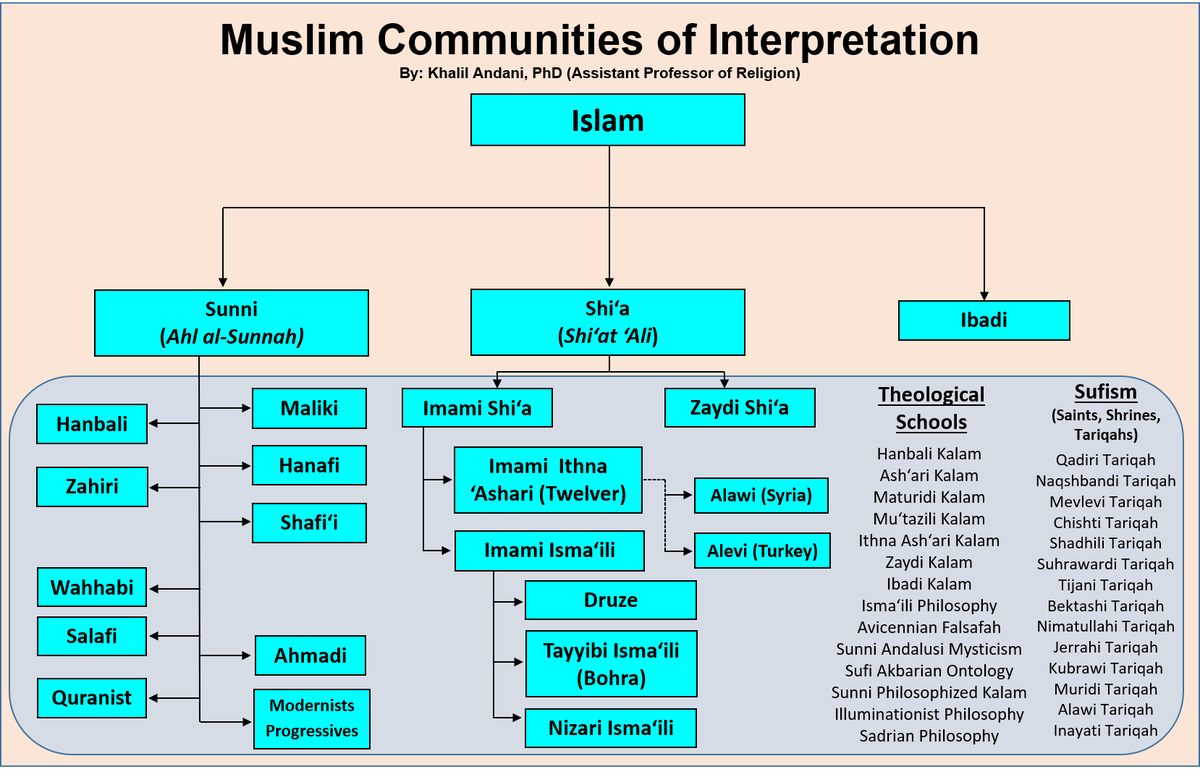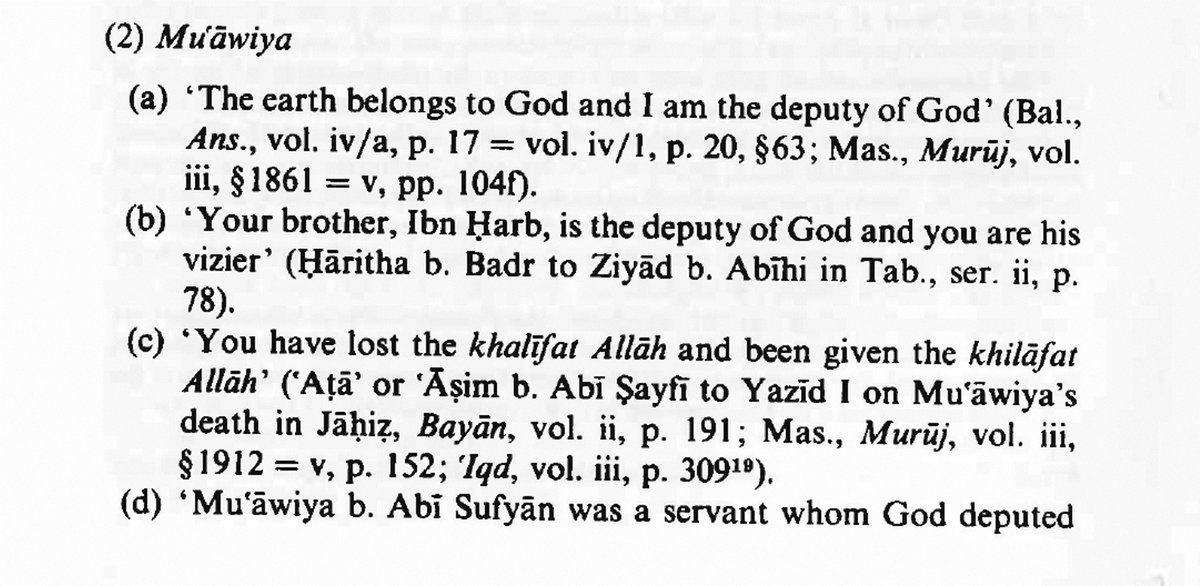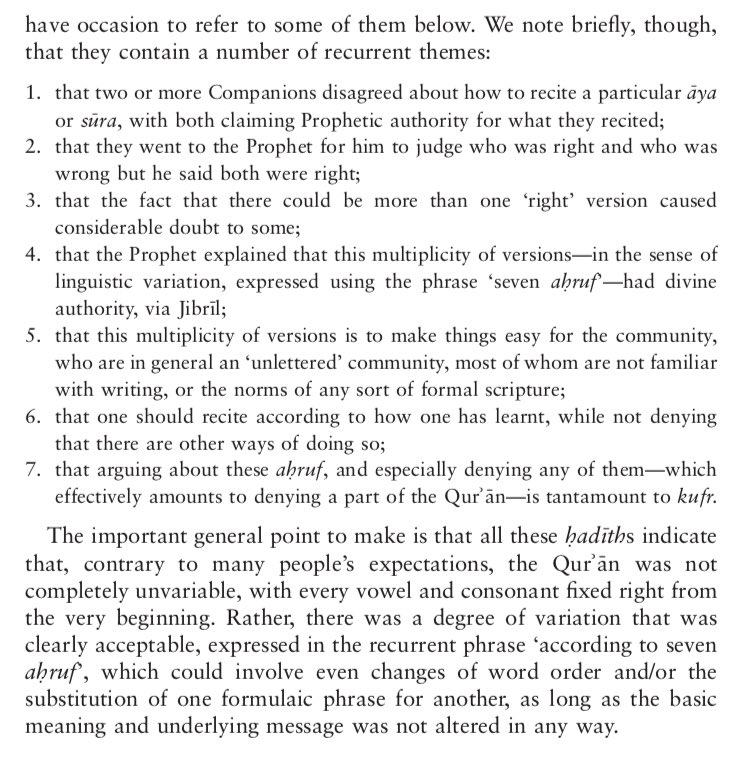Thread: I created this chart to present the internal diversity of Islam from an inclusive & pluralist lens. This is how I teach Islam in the academy. I have tried to show important branches that emerged from larger groups -even if said branches no longer identify as Muslim 

The Sufi Turuq & Theological schools in this chart are NOT meant to appear as separate from Shia & Sunni, but rather, as embedded within those branches. That is why the Sufi & Kalam schools are not in boxes, since their ideas pervade many communities.
Some people are freaking out because I included Quranists, Progressives, Salafis, and Ahmadis under the Sunni umbrella. That is because, for the most part, these groups emerged from the Sunnis - even if there is debate over whether they are still Sunni.
But since Ahmadis consider themselves as Muslims, I will still include them in the visual. Same goes for other groups.
Some people think chart should ONLY include 4 Sunni Madhabs and nothing else. Well sorry, THAT is a Sunni-centric and Sunni-supremacist narrative of Islam. I do NOT teach Islam in the academy by privileging one group's theology or narrative (whether Sunni or Shia) above others.
Overall, the chart has been very successful in helping students appreciate the internal diversity that comprises Islam. Islam is not just one monolithic and static belief and ritual system. It consists of interpretations that evolve across time & space.
I should note that the legal/madhab diversity you see in this chart was agreed upon at the 2005 Aman Conference which was signed on by all major Sunni, Shia, and Ibadi scholars. The Aman Conference - which I still do not think went far enough - recognized 8 madhabs as under Islam
The main shortcoming of this chart is that it is NOT inclusive enough - so some groups like Barelwis, Deobandis, etc. are not spelled out here. There are more Tayyibi Bohra groups you cannot see. Internal differences among Twelver Shia. The list goes on. I will keep expanding it
• • •
Missing some Tweet in this thread? You can try to
force a refresh













